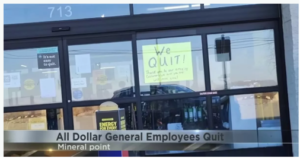Graduation rate is an extremely significant metric for every senior administrator in every higher education institution. US News and World Report uses this important metric in its scoring algorithm, as does every credible media source I can recall.
I am personally familiar with this pain and pressure on administrators to boost this number because I lived and breathed in academia, as Professor, Dean, Director, and Vice-President for Strategic Development for over 35 years. I understand what administrators put themselves through to help students cross the finish line because I have done these things myself!
Is Acquisition Rate or Graduation Rate More Important?
The main challenge lies in a nefarious chicken-or-the-egg paradox. That is, which comes first, acquisition rate or graduation rate?
The US Department of Education recorded an average graduation rate of 59% for the years 2009-2015. However, they also found a high correlation between above-average graduation rates and below-average acquisition rates.
It won’t surprise anybody that choosier schools tend to graduate more students; they can handpick those who are most likely to graduate! But the shock-factor lies in the dramatic difference:
“At 4-year institutions with open admissions policies, 32 percent of students completed a bachelor’s degree within 6 years. At 4-year institutions where the acceptance rate was less than 25 percent of applicants, the 6-year graduation rate was 88 percent.” (US Department of Education, 2017)
It is a chicken-or-the-egg phenomenon because, of course, students pick the schools with higher graduation rates. And even if they aren’t considering this statistic directly, media moguls like US News and World Report score colleges based on their graduation rate. It is a self-fulfilling prophecy, and administrators struggle to break out of their cycle in any way possible.
What we have done is create a few ways that administrators can lift some of the burden on their departments immediately, and sustainably. The answer, in both cases, is customer experience.
Customer Experience Quadrupled Enrollment at DeSales University
The company I have founded, Customer Experience University (CXU) is really a continuation of my experience with online education. Customer Experience just happens to be a slant I have taken because in my academic career, I practiced CX principles very successfully.
In 1990, a I joined DeSales U to help develop their new MBA program. We were a middle Catholic school out near a bustling rural metropolis, population 2,735 back then. More recently, in 2016, only 2,478 people were willing to claim resident status, and I believe the tallest building is still two-stories high.
So, who knows us?! Nobody, right? And I was competing with MBA programs like Lehigh University, Kutztown University, then regionally with St. Joseph’s, Villanova, LaSalle, Temple, etc.
Here’s what I did. I called my five-person staff together and laid down three mandates:
- Every single query that comes into this office must be answered within one hour. The only exception to this rule was the weekend, and on Monday, the first thing my five colleagues had to do was check messages from the weekend and respond.
- Then I assigned each member of my team as advisor to be in touch and stay in touch with prospective students, ask if they needed help, and if they needed help, immediately respond to their needs. We would hold their hands.
- Every incoming student’s tuition requirement would be postponed until they received their first-term grades. The finance office was responsive to innovations supporting enrollment goals to accomplish this, a feat that was only achieved by killing an antiquated policy in its moose tracks (one that forced students to pay up front and receive their reimbursement from employers after receiving their grades).
Let me tell you, the students were on cloud nine. And even when I told all my colleagues in the more competitive schools about what we did, guess what, they were never able to pass anything like that third mandate through their systems. It was what I call, a “Moose” problem of the worst kind. (Read more about cutting through bureaucratic red tape.)
Suddenly, I had a competitive advantage over these larger, more established programs. Students were saying, “Hey! This is great! We don’t have to cough up money until we receive our education!” Even students who were admitted to the better-known, more highly acclaimed institutions were coming to us, giving us wonderful compliments, like: “You guys were so friendly, so supportive, made our lives so easy, we wanted to come here!”
Then the Associate Graduate Dean of one of our challenger schools invited me to lunch. Why? He said we were hurting their enrollment! I told him that is exactly what we set out to do. But I didn’t try to hide our methodology. It wasn’t rocket science, just some small improvements that happened to mean a whole lot to our customers.
Quadruple Growth, Repeatable Success
My efforts grew the MBA Program from 200 to 800, the fourth largest MBA Program in Pennsylvania.
I did the same kind of thing with programs I led across the globe: in Peru, India, Germany, Romania, and so on. All we did was conduct ourselves in ways that were very respectful to anyone we contacted. We did some really cool things.
We are still doing some really cool things, which I’d like to share with you.
Our Customer Experience Solution to Boost Graduation Rates
Now, I would like to come back to how we are helping even more higher education programs raise themselves up by their bootstraps, achieve higher graduation rates and help students become more marketable.
I wrote before that my company, Customer Experience University (CXU), is really a confluence of my experience with online education and my love affair with technology, specifically to the extent that it can be used to promote learning. Actually, I was one of the first in the world to take education online. My first online course rolled out in 1997, when no one even knew of the enormous implications of the Internet.
Now I have another. My company actually has a very simple solution to help you raise graduation rates, particularly during that critical period between 4-year and 6-year students. As you know, graduation rate takes into account all the students who manage to cross the finish line within six years from their initial matriculation, in the case of 2-year schools the period is three years. And there are plenty of students in that interim time-frame who need shockingly few credits to achieve their degree.
I have an idea on how you can persuade them to finish their schooling.
Customer Experience Education: Quick, Convenient, Cost-Effective
The fundamental consideration of your audience is empathizing with students who are entering or have entered the job market. They are looking for ways to earn money, so any offering you make needs to be practical and help them add real value to their resume.
What if you could offer them certification in Customer Experience? Companies are increasingly looking for workers who understand and can practice CX. According to Google Trends, search queries for “customer experience” have doubled in the United States over the last five years. And what do you think some of the hottest long-tail terms are? “Customer experience specialist salary,” and “Customer experience manager.” Lots of young people are interested in this burgeoning field, and companies like Disney, Zappos, and other big companies are requiring new hires to train in CX before they start working.
We offer a very clear solution for higher education administrators, and that is our Customer Experience Program, through which students can earn six college credits from Montgomery County Community College. And because it’s do-it-from-anywhere, anytime, there are no projects, no submissions, no papers; students just have to complete the online courses and pass an exam to receive six college credits on their transcript.
The full program, with test and customer experience certification, costs $1,275 for students. This certification has value on a resume to many employers already and a growing number all across the world.
Final Thoughts: CX Is for Everyone
Whether your office uses CX practices to win against schools with higher reputations, or whether your students compete in the job market with their CX knowledge, it is interesting how many different perspectives, roles, and functions can rely and learn from this common-sense practice.
I hope that no matter who you are, you are walking away with an understanding of how easily customer experience leads to winning strategies in every aspect of what you do.
I continue to believe that none of this is rocket science. Customer experience is common sense, but it is common sense that, for some reason, we all need to hear.
Finally, in keeping with the principles of the CX discipline as an institution you are making it easy for your students to cross the finish line. And that will build loyalty for your organization.






